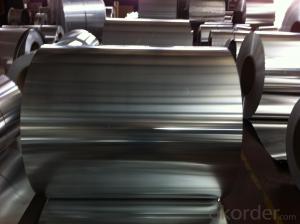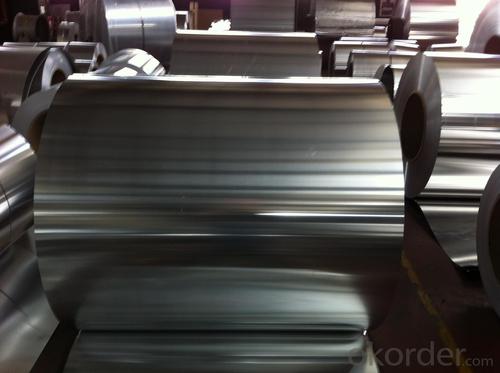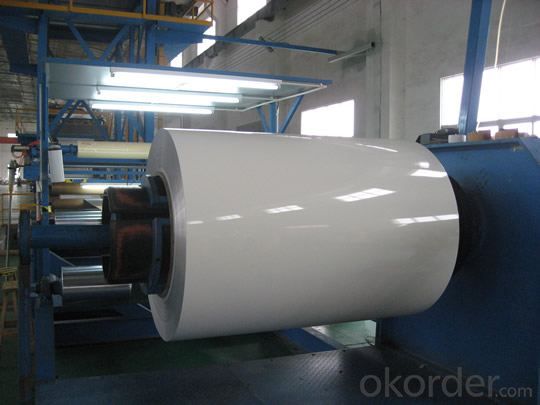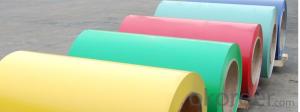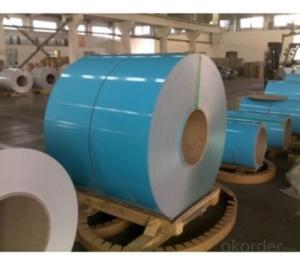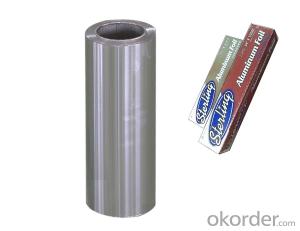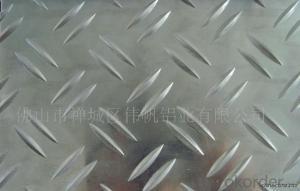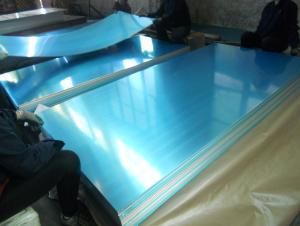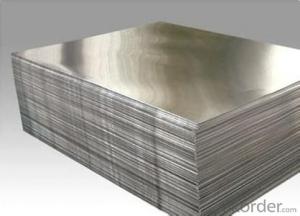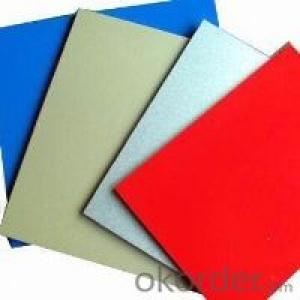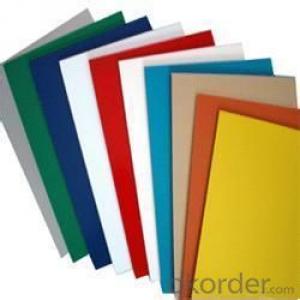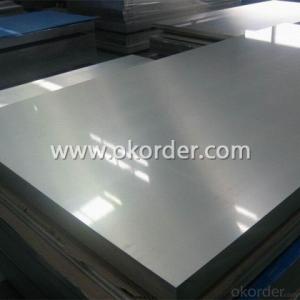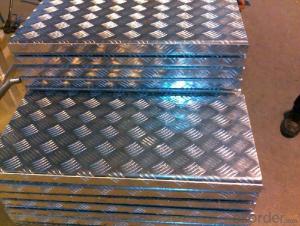Big Enamel Prepainted Mill Finished Aluminum Sheets
- Loading Port:
- Shanghai
- Payment Terms:
- TT OR LC
- Min Order Qty:
- 5 m.t.
- Supply Capability:
- 50000 m.t./month
OKorder Service Pledge
OKorder Financial Service
You Might Also Like
Specification
1.Structure of Mill Finished Aluminium Sheet for Prepainted Color
Mill Finished Aluminium Sheet for Prepainted Color is one semi-finished aluminium material. This strip can be rolled down to aluminium coil,sheet,circle ect. The alloy AA1050 is widly used in building, industry ect. Its weight is much lower than steel. So many customers choosed aluminium material instead of steel.
2. Main features of the product
a.Competitive price---We have our own mills and can produce mill finished aluminium coils, so we can control the production cost better.
b.Professional after-sale service---We have more than 15 years exportation experience and you need not worry about the exporation problems.
c.Fast delivery time---We can control the delivery time within 35 days.
3. Image
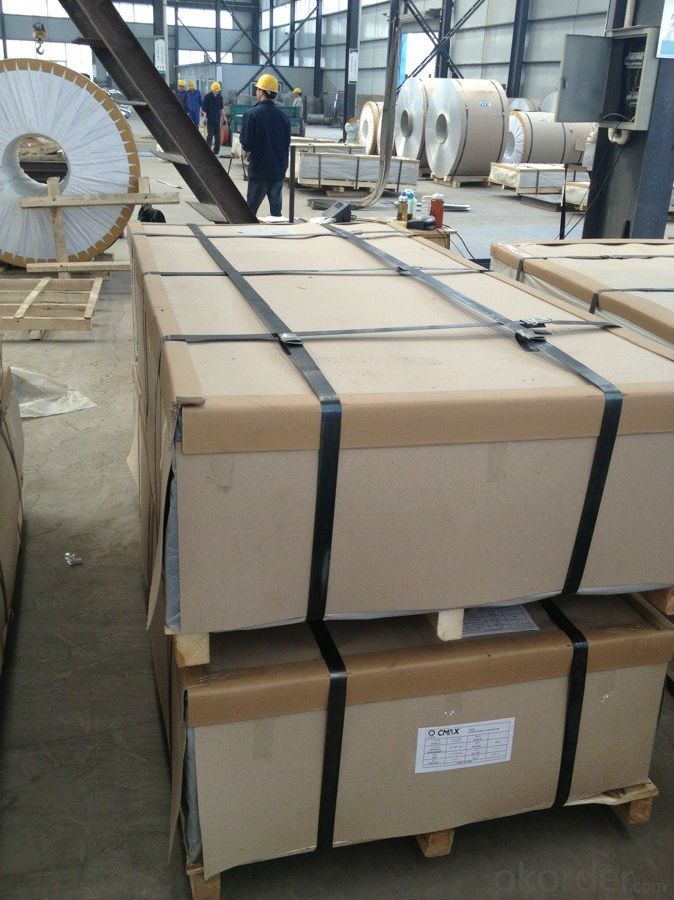
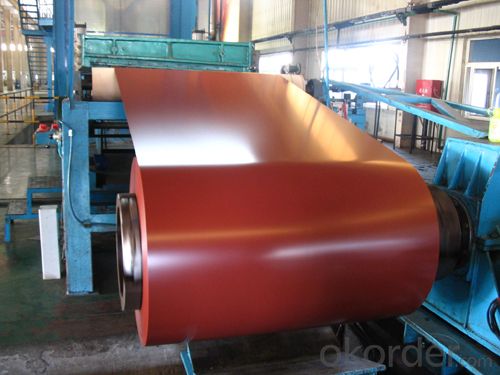
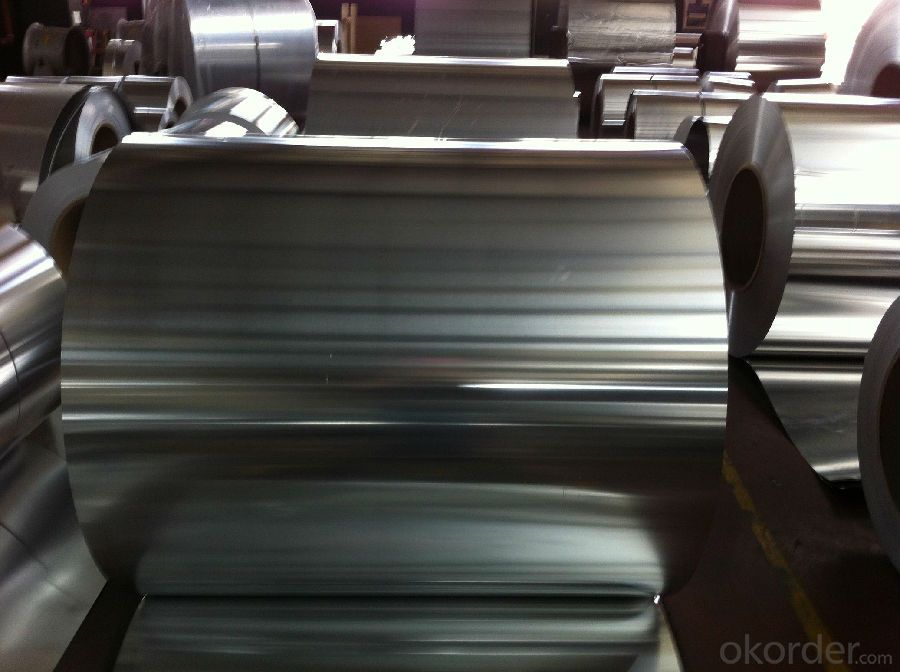
4. Product Specification
| Alloy | Temper | Thickness | Width | Weight |
| AA3003 | H14 | 0.2MM-3MM | 1000MM-1800MM | 2 TONS |
5.FAQ:
What is the quality standard?
---Usually our standard is GB3880-2006
What is the largest width?
---It is 2300mm
What is the MOQ?
---Usually we can accept 80 tons.
- Q: Okay, so i swallowed some aluminum foil like the size of a quarter from my fruit rollup wrapper, ha don't ask why? but my stomach KINDA hurts right now...like 2 minutes later.. Could this have done any damage to me.?
- Nah, you should be fine. It's not the brightest move in the world, but considering that the size is so small and that fruit rollup wrappers are mostly plastic not foil, you should be fine.
- Q: How much is one ton of aluminium plate?
- Aluminum sheet is more than 0.2mm thickness, 500mm, 200mm width, length of less than 16m aluminum material called aluminum sheet or aluminum sheet, 0.2mm below is aluminum, 200mm within the width of row or strip material! Aluminum prices look at what specifications you want, what material, you can consult the Guangdong Hon Hai metal
- Q: How does the alloy composition affect the mechanical properties of aluminum sheet?
- The alloy composition of aluminum sheet plays a significant role in determining its mechanical properties. The inclusion of different elements in the alloy can influence its strength, hardness, ductility, and other characteristics. For instance, adding small amounts of copper or manganese can enhance the strength of aluminum, while magnesium can improve its corrosion resistance. Additionally, the size and distribution of alloying elements within the sheet can also impact its mechanical properties. Therefore, careful selection of alloy composition is crucial to achieve the desired mechanical performance of aluminum sheet.
- Q: What are the different methods of cutting aluminum sheets?
- There are several methods that can be used to cut aluminum sheets, depending on the specific requirements and the thickness of the material. Some of the most commonly used methods include: 1. Shearing: This method involves using a shearing machine to cut straight lines in the aluminum sheet. The machine applies a force to a blade, which then cuts through the material. Shearing is a quick and efficient method for cutting aluminum sheets, especially for thinner gauges. 2. Sawing: Sawing is another common method used to cut aluminum sheets. It involves using a circular saw or a bandsaw with a special blade designed for cutting metal. This method is ideal for thicker aluminum sheets, as it allows for more precision and controlled cuts. 3. Laser cutting: Laser cutting is a highly precise and efficient method for cutting aluminum sheets. It uses a concentrated beam of light to melt and vaporize the material, creating a clean and smooth cut. Laser cutting is particularly useful for intricate designs or complex shapes. 4. Waterjet cutting: Waterjet cutting involves using a high-pressure stream of water mixed with abrasive particles to cut through aluminum sheets. This method is suitable for various thicknesses and can achieve precise cuts without generating heat. Waterjet cutting is often used for thicker aluminum sheets or when high precision is required. 5. Plasma cutting: Plasma cutting uses a high-temperature plasma torch to melt and cut through aluminum sheets. The torch generates an electric arc that ionizes the gas, creating a plasma state. This method is versatile and can cut through different thicknesses of aluminum sheets, but it may result in rougher edges compared to laser or waterjet cutting. It is important to consider the specific requirements of the project, such as the desired cut quality, speed, and complexity, when choosing the most appropriate method for cutting aluminum sheets.
- Q: What are the specific rules or benchmarks that must be followed when utilizing aluminum sheets for construction purposes?
- <p>Yes, there are special regulations and standards for using aluminum sheets in construction projects. These include material specifications, thickness, and strength requirements as per the American Society for Testing and Materials (ASTM) standards, such as ASTM B209 for aluminum sheet and plate. Additionally, the International Building Code (IBC) and local building codes provide guidelines for the use of aluminum in construction. These standards cover aspects like fire resistance, structural integrity, and weather resistance. Compliance with these regulations ensures safety, durability, and compliance with construction laws.</p>
- Q: This question asks for guidance on selecting a trustworthy supplier for purchasing aluminum sheets.
- <p>To choose a reliable supplier of aluminum sheets, consider the following: Check their reputation by reading reviews and testimonials. Ensure they have a valid certification and adhere to industry standards. Evaluate their product quality by requesting samples or visiting their production site. Assess their delivery times and reliability. Confirm they offer competitive pricing without compromising on quality. Look for suppliers with good customer service and after-sales support. Finally, consider their financial stability and ability to fulfill large orders.</p>
- Q: Are aluminum sheets suitable for aerospace fuel tanks?
- Aerospace fuel tanks can indeed utilize aluminum sheets. In the aerospace industry, aluminum is widely employed because of its lightweight yet robust characteristics. Its strength-to-weight ratio is commendable, rendering it an ideal choice for fuel tanks that must endure the forces of flight while minimizing the aircraft's overall weight. Moreover, aluminum's resistance to corrosion is pivotal for aerospace fuel tanks, considering their exposure to diverse fuels and environmental conditions. Furthermore, aluminum's ease of fabrication and widespread availability make it a cost-efficient option for aerospace applications. In summary, aluminum sheets are a fitting material for aerospace fuel tanks due to their strength, lightweight nature, corrosion resistance, and cost-effectiveness.
- Q: Can aluminum sheets be used for sign making?
- Yes, aluminum sheets can be used for sign making. Aluminum is a commonly used material for making signs due to its durability, lightweight nature, and resistance to rust and corrosion. It is a versatile material that can be easily cut, shaped, and printed on, making it suitable for various sign making applications.
- Q: Do 101 aluminum sheets require any special maintenance or care?
- Maintenance or care is not necessary for 101 aluminum sheets. This material is durable and resistant to corrosion, allowing it to endure different environmental conditions without degradation. Nevertheless, to guarantee their longevity and optimal performance, it is suggested to regularly wipe them with a soft cloth or sponge to keep them free of dirt or debris. It is also advisable to avoid using abrasive or harsh cleaning agents in order to prevent potential harm to the aluminum sheets. In summary, with minimal attention and care, 101 aluminum sheets can retain their quality and appearance for an extended duration.
- Q: What is the fatigue strength of aluminum sheets?
- The fatigue strength of aluminum sheets can vary based on several factors, including the composition of the alloy, thickness, condition of the surface, and the specific loading conditions. When compared to other metals, aluminum alloys typically exhibit favorable fatigue strength. To determine the fatigue strength of aluminum sheets, fatigue testing is commonly employed. This involves subjecting specimens to cyclic loading until failure. The fatigue behavior of aluminum sheets is characterized by the S-N curve, which represents the relationship between the applied stress amplitude (S) and the number of cycles to failure (N). Aluminum alloys, such as 2024-T3 and 6061-T6, are frequently used in industries like aerospace and automotive due to their high fatigue strengths. These alloys can endure millions of cycles at specific stress levels. For instance, at 10^6 cycles, 2024-T3 aluminum alloy has a fatigue strength of approximately 105 MPa (15,000 psi), while 6061-T6 aluminum alloy has a fatigue strength of around 96 MPa (14,000 psi). It is worth noting that the fatigue strength of aluminum sheets can be influenced by various factors, including surface defects, corrosion, temperature, and loading frequency. To enhance the fatigue strength, it is important to properly prepare the surface by smoothing it and eliminating sharp edges. Additionally, the use of appropriate stress relief treatments and design considerations, such as avoiding stress concentrations and optimizing joint design, can also improve the fatigue performance of aluminum sheets. In conclusion, the fatigue strength of aluminum sheets is generally considered good. However, it is crucial to consider the specific alloy, thickness, surface condition, and loading conditions in order to accurately determine and optimize the fatigue performance in practical applications.
Send your message to us
Big Enamel Prepainted Mill Finished Aluminum Sheets
- Loading Port:
- Shanghai
- Payment Terms:
- TT OR LC
- Min Order Qty:
- 5 m.t.
- Supply Capability:
- 50000 m.t./month
OKorder Service Pledge
OKorder Financial Service
Similar products
Hot products
Hot Searches
Related keywords
